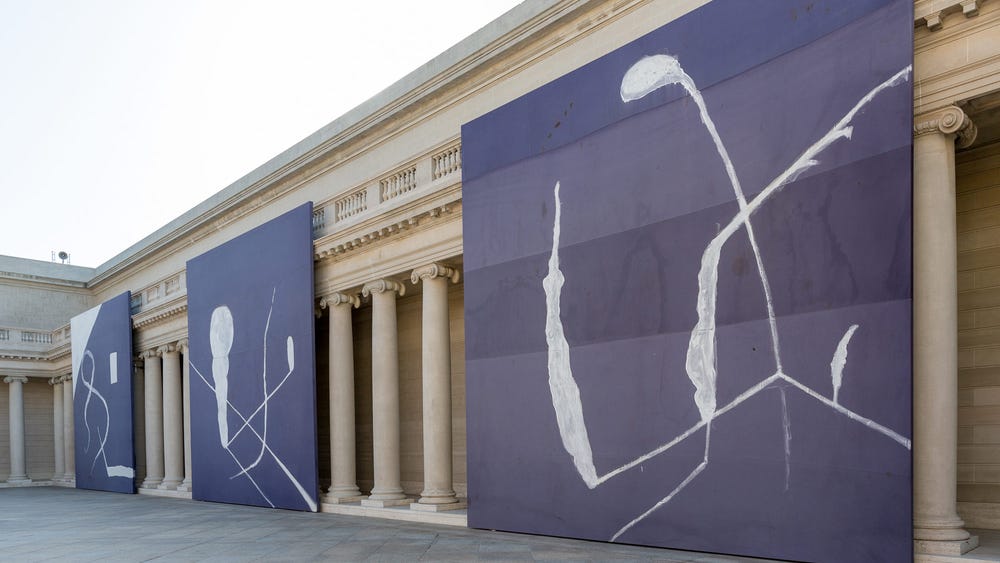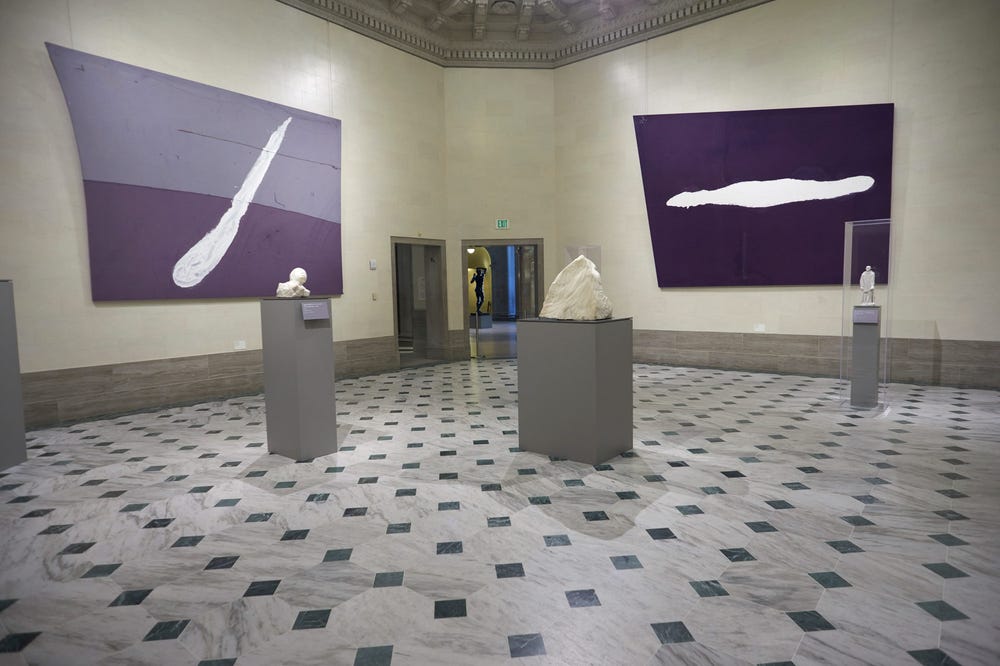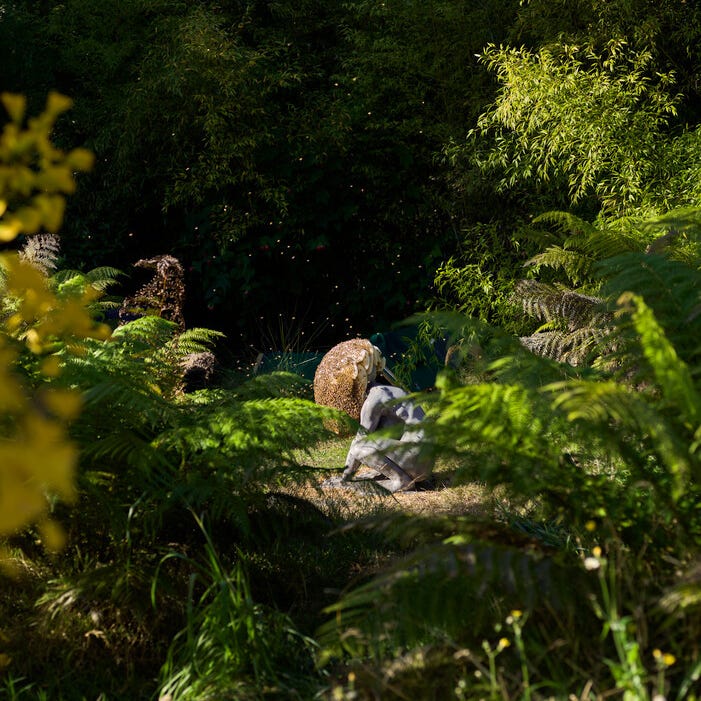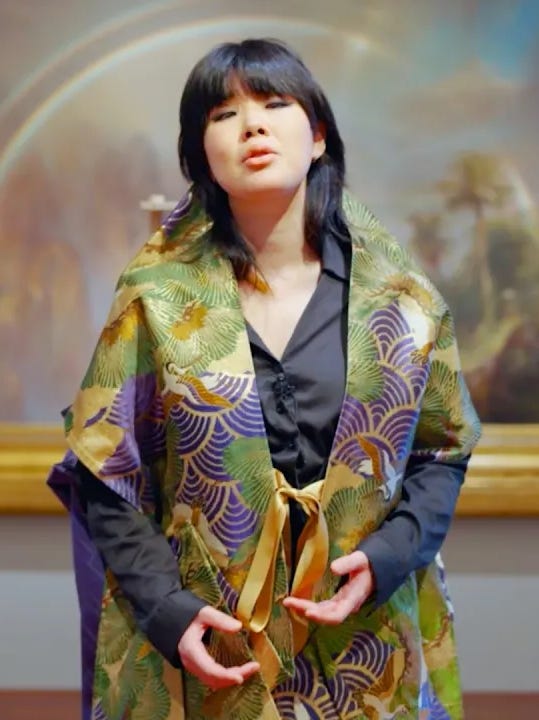Since 1977, Julian Schnabel has captured people’s imagination with paintings that speak to his incessant appetite for sculptural physicality, material diversity, and pictorial symbolism. The exhibition, Julian Schnabel: Symbols of Actual Life, features a new body of work created for the Legion’s Court of Honor. At twenty-four by twenty-four feet each, the paintings are both monumental in scale and ephemeral in nature. Exposed to the elements over the four-month run of the exhibition, they incorporate the history of their exhibition into their visual and material nature. Schnabel also presents eight paintings from three distinct bodies of work, including a new series of abstractions on Mexican sack linen and examples from the Goat Paintings (begun in 2012) and Jane Birkin series (1990).
I see paintings everywhere.—Julian Schnabel
Julian Schnabel took some time out of his schedule in Paris, where he was working on his latest film, to speak with director Max Hollein about his materials and process. The following has been edited from the full interview, which will appear in the exhibition catalogue later this year.
Max Hollein: For many painters, the process of painting basically starts when they have the regularly sized canvas in front of them, blank, and they apply a complex composition, and diverse painterly levels. In your case, the process of painting starts at a very different time. There’s a different understanding of what a painting is and what it can be composed of.
Julian Schnabel: You're talking about the process of when a painting begins. I might be driving through the jungle, or driving down a road, and I see a painting. I see paintings everywhere. I was driving down the road in Mexico near the jungle, and I saw this material—there was a toy store, and they were selling shoes and different artifacts or whatever. But I didn't want to buy any of the things that he was selling; I wanted the thing that was covering what he was selling. And that was this pink material that was bleached by the sun that was a color that you can't find anywhere. And I needed that particular thing in order to proceed with my process. I was reacting to what already existed in the world.
MH: If we look at the exhibition at the Legion of Honor, which basically consists of four different bodies of work from the early 1990s to now, there are a lot of things that combine them together: the idea of the gesture or the mark and also some of the paint that's being applied in various areas. Would you say that that was a principle in deciding which series you would want to exhibit?
JS: I think that I look at this as one work, in a sense that—okay, we walk in, we have these paintings that are speaking to the courtyard, and scale is one thing that we are addressing. There are three paintings in one of the rooms that have essentially white marks on them. And they’re shaped paintings. And the reason why they’re shaped is because I hung the material between palm trees in the jungle in the studio, and there was a kind of arch that they made. And I thought, why make them rectangular if this is the shape that they are in? So I made the stretchers to go with the way they appeared to me. Then I also felt, when I went to the museum and I saw Rodin's maquettes and studies for things like a foot, that those kinds of shapes, and even the little wires that they’re on, echo the kind of drawing that was in these giant paintings.
Marks are made with all sorts of different kinds of intentions. Sometimes they are intended to be wallpaper. Sometimes they are just marks that exist because somebody was trying to hang something to protect something else and it happened to get burnt by the sun. But these objects bring that history with them. So there are things that are recognizable and unrecognizable and, in the sense of Walt Whitman, I would say that there is a horizontal plane where all of these things exist. Because I don't make hierarchal judgments about what should be or could be in a painting.
So I thought in this particular show, I'm not showing that many paintings, but I wanted to put together a concise group of things that show the expanse of what you can do with imagery, how you can make marks. So you have kind of a set of, what's the word, a grocery list of different possibilities for a recipe of how one could approach painting.





